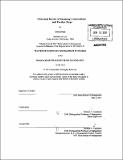| dc.contributor.advisor | Michael A. Cusumano. | en_US |
| dc.contributor.author | Han, Jiwon, S.M. Massachusetts Institute of Technology | en_US |
| dc.contributor.other | Sloan School of Management. | en_US |
| dc.date.accessioned | 2011-09-13T17:54:42Z | |
| dc.date.available | 2011-09-13T17:54:42Z | |
| dc.date.copyright | 2011 | en_US |
| dc.date.issued | 2011 | en_US |
| dc.identifier.uri | http://hdl.handle.net/1721.1/65802 | |
| dc.description | Thesis (S.M.)--Massachusetts Institute of Technology, Sloan School of Management, 2011. | en_US |
| dc.description | Cataloged from PDF version of thesis. | en_US |
| dc.description | Includes bibliographical references (p. 82). | en_US |
| dc.description.abstract | Samsung Group has been growing rapidly for the last ten years, based on Korean exclusive historical and economic backgrounds. Especially, Samsung Electronics, the biggest subsidiaries in the Samsung Group has grown very fast in that period with the technological background - the features of the digital era and disruptive technology and the other background - Korean domestic situation also makes Samsung Group grow so fast. In the most adverse economic environment the Korean government supported Samsung Group entirely and their "Frankfurt Announcement" in 1993 was meant to get over Asian Financial Crisis in 1997. Their distinctive factors to be successful are their structures, the triangle structure and the vertically integrated structure among the subsidiaries. The triangle structure stands for the ownership, future strategy office, and the professional CEOs of subsidiaries and it provides the fast decision making process and the vertically integrated structure helps Samsung Group finding the new opportunity. I review their history and the backgrounds which influenced on them and diagnose their internal successful factors with the specific cases, and try to find out their factors by comparing them with LG Electronics, the domestic competitor which went through the same historical and economic situation and with Sony which used to the insurmountable top company to Samsung Electronics and currently becomes the big competitor. | en_US |
| dc.description.statementofresponsibility | by Jiwon Han. | en_US |
| dc.format.extent | 82 p. | en_US |
| dc.language.iso | eng | en_US |
| dc.publisher | Massachusetts Institute of Technology | en_US |
| dc.rights | M.I.T. theses are protected by
copyright. They may be viewed from this source for any purpose, but
reproduction or distribution in any format is prohibited without written
permission. See provided URL for inquiries about permission. | en_US |
| dc.rights.uri | http://dspace.mit.edu/handle/1721.1/7582 | en_US |
| dc.subject | Sloan School of Management. | en_US |
| dc.title | Historical review of Samsung's innovations and further steps | en_US |
| dc.type | Thesis | en_US |
| dc.description.degree | S.M. | en_US |
| dc.contributor.department | Sloan School of Management | |
| dc.identifier.oclc | 750024899 | en_US |
